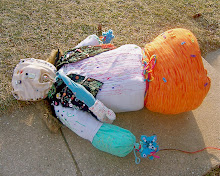 Salvador Dali
Salvador Dali (Digital Media for the Classroom and Professional Development) is a free online educational resource for educators. The site provides professional development courses to provide educators with strategies and resources to develop effective instruction. The content on the website is drawn from PBS shows such as Frontline, NOVA, and American Experience. Teachersdomain.org yields an enormous amount of information. It is an online library with more than 1, 500 free resources. I took a quick glance at the site. I did not have time to join but I was able to view up to 7 lessons without a membership. By the way, memberships are free. The content was accurate and comprehensive. A member is allowed to remix capabilities, download and share material on the website. The lesson plans are detailed and clear. The plans include links to videos, websites, vocabulary, materials, grade levels and suggested time. Teachersdomain.org provides cross-curricular instruction to impact the learning experience for the students and illustrates easy and simple ways digital media is used today.
***** (5 stars)
I was introduced to Teachersdomain.org by reading an article on
Reuters.org. The article discussed the impact of a new touch screen technology used in the classroom by many educators to keep the students engaged with the material. Smartboards create a two-way connection to learning and teaching. In the Article
Digital Media and Touch Screen Technology: An Increasing Trend in Education Eleri Merrikin states, " Students today learn with
media and technology because they've grown up in a multimedia world,
so these resources are something they relate to easily."
Smartboards or white boards are known to captivate students by use of their finger as a cursor. The white boards are available in a variety of sizes, allow you to save information in a snapshot, use your finger as a writing utensil and much much more.

Somehow I landed on a website detailing information about a "media on wheels" that could be rolling along the curb of your school. On September 15, 2008, The Kennedy Center and Daimler Financial announced the plan for a ground-breaking arts education program. The Kennedy Center in partnership with Daimler Financial is seeking applications from schools across the country to participate in
On Location: Spotlight in Your Community. Ten schools will be accepted. If you are interested I think there is still time to
apply.
The benefits of On Location: Spotlight in Your Community
:0 The Thomas Built Bus "media studio on wheels" will visit each of the ten schools selected for two weeks.
0 The Thomas Built Bus will be on site from January to June 2009.
0 The students will document an artist or arts group from their community using digital media.
0 A team of trained, theater and media professionals will guide the students and teachers through the process of developing the documentary.
0 The documentary will be showcased on the On Location: Spotlight in Your Community website to showcase the rich diversity of arts in the communities of the United States of America.
0 Online curricular support and in-person learning opportunities will be provided for students and teachers.
0 Each of the ten schools will receive a media equipment package including a computer, software, video recording gear and $1,000 to support further development of the new digital arts and humanities program.
This program reminded me of bookmobiles. Bookmobiles are libraries with wheels. Today bookmobiles travel to provide literature and digital technology to Spanish speaking communities, elders living in assisted care communities and homeschool families. The bookmobiles are usually wheelchair accessible.

















































